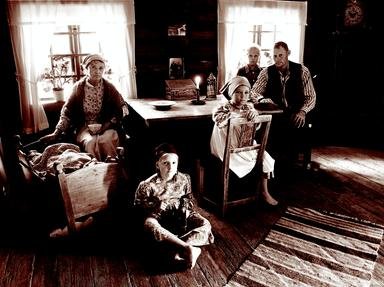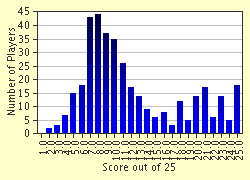Quiz Answer Key and Fun Facts
1. What was the regimental song of the 7th Cavalry?
2. What officer's death at the Battle of the Washita earned Custer the lasting hatred of Captain Benteen?
3. Which of these actors never portrayed Custer in a Hollywood movie?
4. What was the name of Custer's executive officer at the Battle of the Little Bighorn?
5. Americans named Custer's last stand as the Battle of the Little Bighorn. What did the Indians call it?
6. The commander of the Gray Horse Troop was First Lieutenant Algernon Smith. What was the official army letter designation for this troop?
7. What caused Custer's defeat at the Little Bighorn?
8. One of Custer's scouts was Red Bear. What Indian tribe was he a member of?
9. The sole survivor of the Custer battalion at the Little Bighorn battle was a horse named Comanche. Who owned that horse?
10. What Indian leader had a mystic vision that foretold the defeat of Custer?
11. Who told Captain Benteen that the Indians were "skedaddling" after delivering a message from Custer at the Bighorn?
12. What fort was the original home post of the 7th Cavalry in 1866?
13. Why did Custer order Benteen and his battalion to recon the hills to the left just before the Bighorn battle?
14. Who said "Please, Mr. Custer! I don't wanna go."?
15. The forces of a famous Indian fighter on his way to join with Custer were defeated a few days before the Little Bighorn battle by Sioux warriors who were also present at Custer's Last Stand. What was the name of the officer in charge at the Battle of the Rosebud?
16. What was the name of the observation point from where Custer looked down into the Little Bighorn Valley to detect the Indian village?
17. Sitting Bull was the Chief of what Sioux tribe?
18. What is the surname of the Commanding Officer of the Seventh Cavalry Regiment in June of 1876?
19. Five Custer relatives died at the Battle of the Little Bighorn.
20. What is the surname of the executive officer of Company D, on scouting duty, at the Battle of the Little Bighorn?
21. What Indian Chief was in the Battle of the Little Bighorn?
22. The first letter of the correct answers for the first 21 questions spell the full name of this warrior of 'Last Stand' fame.
23. Tom Custer won the Medal of Honor twice during the Civil War.
24. How old in years was General Custer when he died?
25. On seeing the dead body of George Custer lying where it fell, what officer said "There he is. God damn him, he will never fight anymore".
Source: Author
KIRKEPOO
This quiz was reviewed by FunTrivia editor
bloomsby before going online.
Any errors found in FunTrivia content are routinely corrected through our feedback system.


